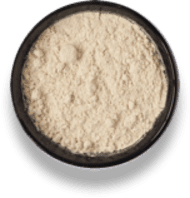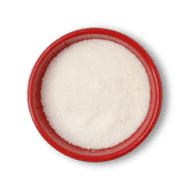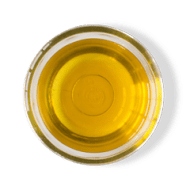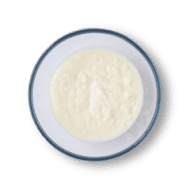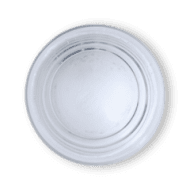Originating since the 12th century in the Indian sub-continent, lachha paratha is a flatbread that is an integral part of Punjab cuisine. means ‘ring’ and “parat” means layer. Hence, a multi-layered paratha is formed by the amalgamation of two words, parat and atta, referring to whole wheat flour. Made by coiling the layers of cooked dough, another name of laccha paratha is ‘Paratwala paratha’. The melt-in- the- mouth texture of this crispy and flaky lachha paratha is rendered by frying them in ghee or oil to make the most of the lachha paratha recipe.
Be it a festival, special occasion or Sunday brunch, and you can make your favourite layered paratha in your North Indian breakfast and lunch menu. Each household has its own technique and lachha paratha recipe that has been handed down from one generation to the other. However, we need to keep in mind the nutrient requirements of the modern-day lifestyle and make alterations to this age-old laccha Paratha Recipe.
Although laccha Paratha seems to be a calorie-rich dish when cooked with hydrogenated vegetable oil or fat like margarine, you can give this lachha paratha recipe a healthy twist by using less oil, ghee, butter, wholegrain
or multigrain flour. Healthy and appetizing, the paratha of this lachha paratha recipe contain nutrients that can be a part of a well-balanced diet plan. One lachha paratha offers 250 calories providing about 13 per cent of the total daily calorie requirement of a standard adult diet of 2,000 calories. Carbohydrates present in wheat flour is the main source of energy for the body. The fibre in your lachha paratha aids in digestion, keeps the cholesterol level under check, while its protein content increases strength, boosts metabolism and helps to maintain weight-loss. The good fat content of this lachha paratha even lowers the risk of heart disease by lowering the blood pressure levels. Those on a Keto diet may satisfy their craving for a lachhedar paratha by choosing soy flour for this lachha paratha recipe.
lachha paratha looks quite similar to Malabar parotta which is a flatbread mostly eaten in Kerala. Although it might initially seem difficult for amateur cooks, the secret of making the perfect paratha lies in rolling them in the right way. Just follow the instructions and proportions of the ingredients used in the recipe of lachha paratha meticulously and prepare the table for a sumptuous meal for your family. It is important to note that lachha paratha can be made in two ways- tawa or tandoori lachha style. Tandoori style is the more traditional way of cooking the paratha, which gives it a dry and smoky texture, while the tawa lachha paratha has a more crumbly texture.
Your delectable lachha paratha is made by resting layers of dough upon each other, with each layer looking like a ring. The dough is frequently flipped over while adding ghee to it and frying it on a non-stick pan. The lachha paratha video provides a step by step detailed instruction that would help in speeding up your meal preparation. If you’re making wheat lachha paratha, combine all the ingredients comprising of 2 cups of wheat flour, 2 teaspoons of oil and salt in a deep bowl and knead them into a smooth dough using warm water. Cover and set it aside for 20 minutes. Knead it again and divide the dough into 10 equal portions. Roll them out into thin circles of 6-7inches diameter by dusting little plain flour on the top. Apply oil or ghee on the discs. Sprinkle some whole wheat flour and start folding and pleating from the edges till it resembles a paper pan. Roll the pleated dough into a tight circle and join the edges. Dust some flour again and roll them again. Place the paratha on the tawa, and it to cook on medium-low heat. Turn it over once one side is partly cooked. Apply ghee or oil on the other side and keep flipping few times till the lachha parathas are evenly roasted and well-cooked from within. Press the sides with the spatula while frying the parathas. The addition of milk to the flour makes the dough really soft. So instead of fretting over it's tricky technique, learn the nuances of making these parathas at home by watching the laccha paratha video.
Adding aromatic herbs or a combination of flavourful spices also alleviates the lachha paratha recipe to make them more appealing for your kids and guests. Speaking of parathas, leftover chana dal or freshly soaked and pressure cooked Bengal gram or chana dal can be kneaded into the dough to make
dal parantha at home. While grated garlic mixed with the dough makes the most amazing
Garlic naan, just as you might have tasted at restaurants. If you want your menu to be more versatile,
Jeera rice doesn’t fail to impress as a one-pot dish. This flavoured rice dish is made by cooking fragrant basmati rice, cumin and spices in ghee to make the heartiest meal.
lachha parathas are often paired up with kebabs, meat or vegetable curry. Dishes like
Amritsari dal,
Amritsari Kulcha, or
dal makhani accompanied by lachha paratha completes your weekly meal plan if you’re a strict vegetarian. A hint of raita or pickle goes well with your spiced lachha varieties, though. When the flaky layers of these parathas trap a good amount of curries in each dip, they taste truly irresistible in each bite.
Layered paratha offers a tempting treat for all ages. Made from the common, unassuming ingredients found mostly in your kitchen pantry, lachedar paratha tastes best when served hot. No matter how big the brand may be, the health properties and freshness of the ingredients of frozen lachha parathas remain highly questionable. However, in case you’re travelling or need to store them for a long time, you may half cook the parathas on the pan and freeze them. Refrying them would again make them ready for consumption. Once you’ve gained proficiency in making the best lachha paratha recipe to your repertoire, try its other variations or the side dishes accompanying it to add another feather in your cap of the master chef of your family.



